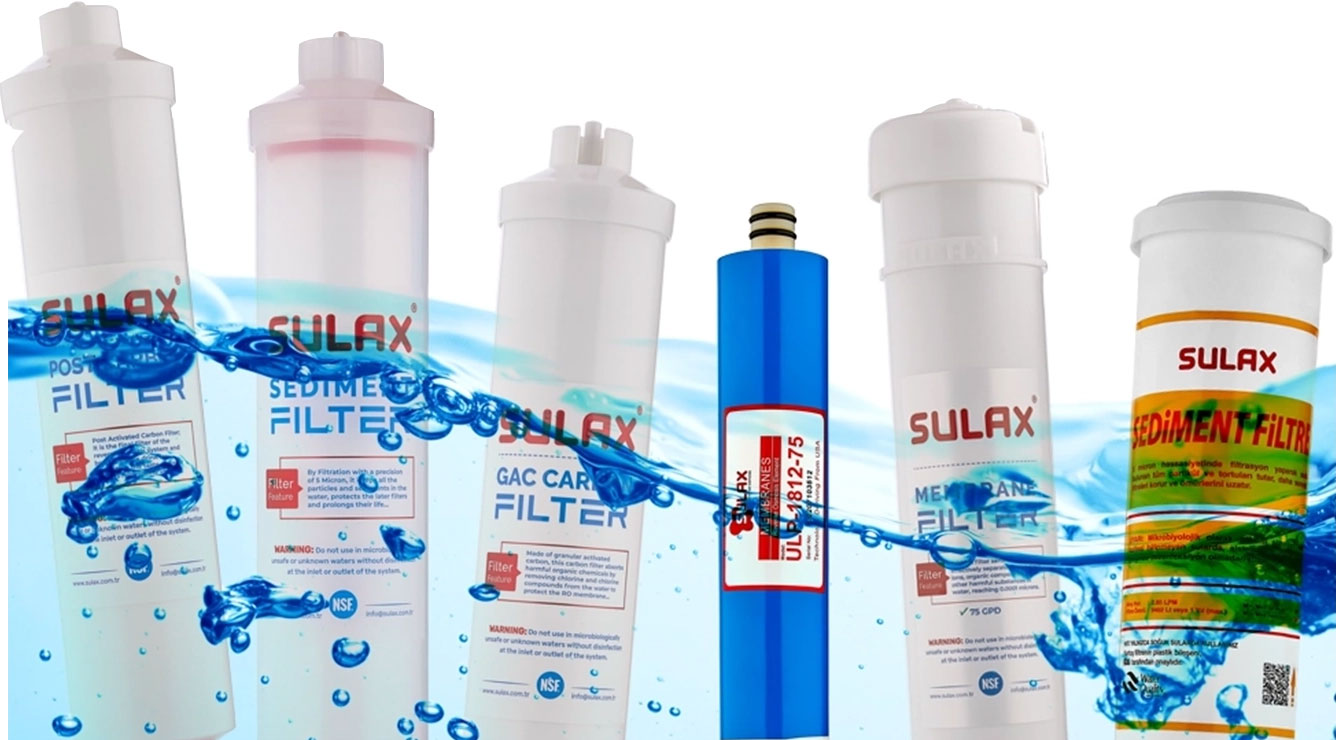
The order of water purification filters is critically important for the performance of the device and the quality of the water. An incorrect filter configuration not only reduces purification efficiency but also negatively affects the lifespan of the device. The filter sequence in a water purification system refers to arranging all filtration stages correctly, transforming contaminated water into drinkable water step by step.
In water purification devices, the filter order is essential for effective and safe water purification. Incorrect placement of filters causes them to clog prematurely and shortens their service life.
Moreover, harmful substances may not be completely removed from the water, negatively affecting taste, odor, and clarity. Improper filter order can also impact water pressure and disrupt the system’s operation. Therefore, correct filter sequencing improves water quality, reduces malfunctions, and lowers maintenance and operating costs.
The water purification filter sequence is critical to ensure the most effective cleaning of water. A proper filter sequence allows for the gradual removal of dirt, sediment, chlorine, heavy metals, and microorganisms.
In the first stage, a 5-micron sediment filter traps large particles and sediments. In the second stage, a granular activated carbon filter removes chlorine and organic substances. The third stage uses a CTO carbon block filter for finer chemical filtration. In the fourth stage, a membrane filter purifies the water at the molecular level, removing harmful bacteria and heavy metals. Finally, a mineral filter restores essential minerals to the purified water.
The correct water purification filter sequence should be as follows:
If the filter order is incorrect, the system will not perform as expected. For example, when sediment or carbon filters that should be at the initial stages are rearranged, the load on the membrane filter increases. This leads to faster clogging and even damage to the membrane. If the activated carbon filter is placed first instead of the sediment filter, large particles like sand and sediment can clog the carbon filter and reduce water pressure.
Additionally, incorrect filter sequencing negatively affects the taste and quality of drinking water. If the CTO carbon filter is not in the right position, chlorine and organic substances may not be adequately removed, leaving unpleasant tastes and odors. If the post-carbon polishing filter is not correctly placed, the final water may taste flat or neutral.
For all these reasons, proper filter sequencing is essential not only for the longevity of the device but also for protecting your health.
Although correct filter sequencing prolongs the life of the device, the filters must still be replaced periodically. Otherwise, saturated filters will no longer adequately clean the water, and contaminants may re-enter the purified water.
Recommended replacement intervals for water purification filters are as follows:
These intervals may vary depending on the quality of the incoming water and how heavily the system is used.
The mineral filter is placed at the 6th stage in water purification systems. Its purpose is to restore beneficial minerals such as calcium and magnesium to the water after it has been fully purified. This improves the taste of the water and balances its mineral content. This stage contributes to making purified water both healthy and pleasant to drink.
Before the membrane filter, there must be sediment and activated carbon filters. These protect the membrane from large particles and chlorine, extending its lifespan and preventing damage or clogging.
Because its purpose is to remineralize the fully purified water. If it were placed earlier, the reverse osmosis process would remove these minerals again, defeating the purpose. That’s why the mineral filter is installed in the 6th and final stage.

Fill out the form and be the first to enjoy the benefits!